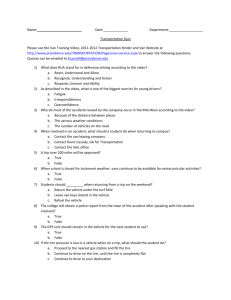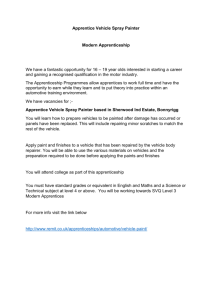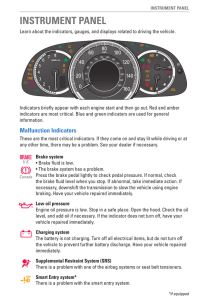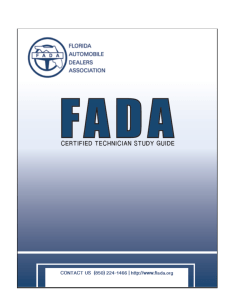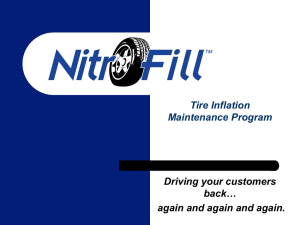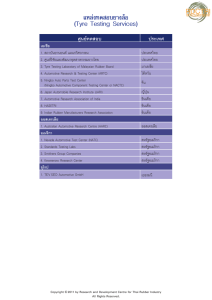Have Fun Teaching an Intro Class
advertisement
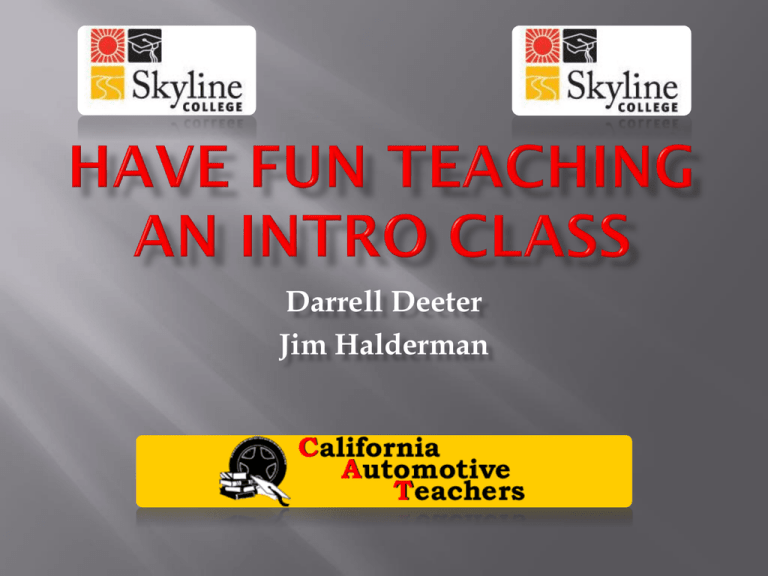
Darrell Deeter Jim Halderman Darrell Deeter- Professor at Saddleback College in beautiful Mission Viejo, CA. Jim Halderman- Automotive Author and Professor at Sinclair College You- The three types of students who take an Intro course What students want out of an Intro course How much depth and breath is enough? How to present content but not give them too much. Remember, they need to take other, more advanced, courses. CONSUMER INTEREST Car maintenance and general knowledge Wants to know how things work Willing to do basic inspections Wants to know enough to know what to do and when ENTERING PROGRAM To get ready to take the automotive program courses. To get them ready all of the basic services should be presented All safety concerns should be addressed. ENTRY-LEVEL JOB Wants to work at a service department or shop. Needs basic skills so they are productive employees It seems that they want to learn how to fix their brakes, repair a dent in the door and know what the fault is that is causing the “Check Engine” light to come on. After introductions and quickly reviewing the scope of the course, I go around the class and ask what THEY would like to learn. I write their requests on the white board. If the request is beyond what we will be covering, I tell them right then that it is beyond the scope of this course and that it is covered in AUTO XXX. This stops them from thinking that we did not meet their needs Remember that most students in an Intro class do not know the parts or what they do. Gets the students involved and makes for some good quiz questions such as: “What is the purpose and function of engine oil?” After describing the purpose and function, then show the parts involved and how the unit works. Remember KISS: Keep It Simple for Students. Pretend you are explaining something to your grandmother Do not be condescending Try to make lab assignments something they can do in their driveway Instead of diagnosis, what is important for the beginning student to know is if it working as designed. Is the air conditioning working? Is the battery being charged? Are all of the lights working? Include used vehicle project to help them get used to looking at all aspects of the vehicle. Discussed how to perform a vehicle inspection after midterm and made the project due the last week in the term. I ask students to bring their vehicle into the shop I get to associate the vehicle with the student We do a safety check I end up giving a lot of bulbs away Introduce the course School regulations require students to have completed the safety test before they are allowed into the shop area. After that.. I have them change a tire on their car, using only the spare tire tools in the car DEMONSTRATION Always demonstrate how to safely hoist a vehicle. Show how to use a floor jack and safety stands too. DISCUSS OIL AND SPECS The week before everyone is to change their oil, I discuss oil and where to find what their vehicle needs. This gives them a week to get the correct oil. (hopefully) DEMONSTRATION SHOW THINGS THAT SHOULD BE CHECKED Exhaust CV joint boots Fuel lines Brake lines Fluid leaks Show different fluid colors and smells DEMONSTRATE WHAT IS “NESTING”? When students sit down they surround themselves with their “stuff”. They seldom want to move from their “nest” HOW TO PREVENT IT After each short piece of information, I get them out of their seats and into the shop to do something. This can be a show and tell or a demonstration Again, get the students involved. Get them out of their seats as much as possible. Avoid “Death by PowerPoint” THEY CAN PAIR UP INCREASES INTEREST All Fluids Accessory drive belts Tire pressures Dash warning lights and what they mean Electrical basics like volts and ohms Basic meter usage such as measuring a light bulb filament for resistance and battery voltage I avoid discussing amperes and electrical laws at this stage. Is the system working as designed? Feel the heater hoses and the A/C lines Check vent temperatures Tire changing? Brake pad replacement? Auto transmission service? Tire balancing? Engine rebuilding? Interview your students Get to know them and their vehicles Great place to get more students into your program Try to keep it simple and easy Try to avoid getting them or yourself over worked or too far into a project. This class must be successful or your advanced classes won’t matter because you won’t have any students! Have fun teaching your beginning automotive class! jim@jameshalderman.com drdeeter@gmail.com
